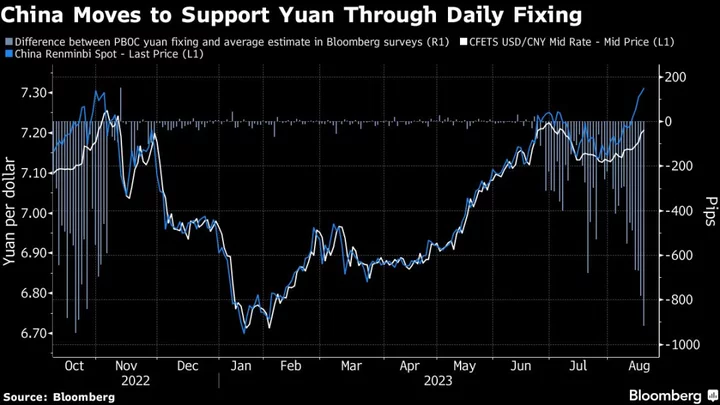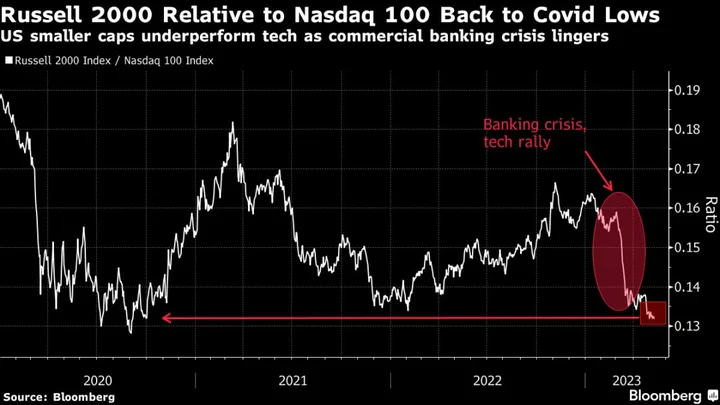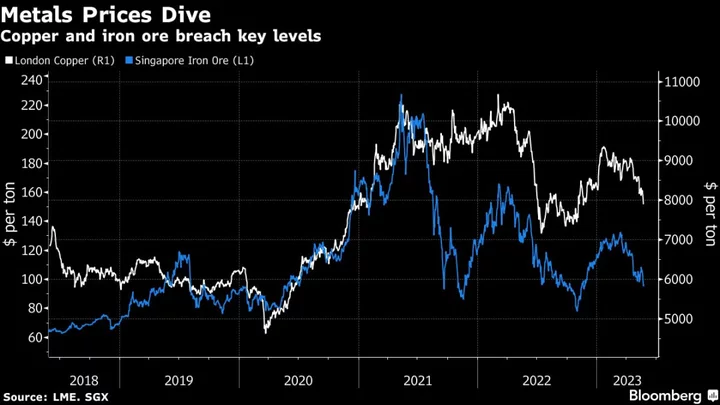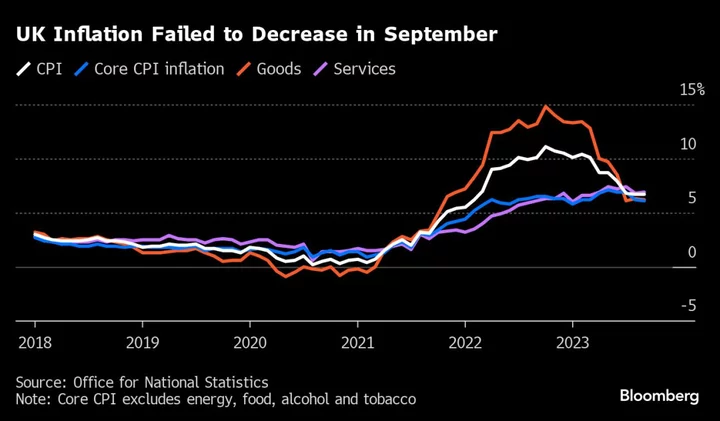Chinese authorities told state-owned banks to step up intervention in the currency market this week, in a push to prevent a surge in yuan volatility, according to people familiar with the matter.
Senior officials are also considering the use of tools such as cutting banks’ foreign-exchange reserve requirements to prevent a rapid depreciation in the currency, said the people. The request came as the yuan fell toward 7.35 per dollar, a level that top leadership has been paying close attention to, they added.
Authorities were also checking whether domestic companies helped accelerate yuan declines by conducting speculative trades against it, said the people, who requested not to be named as they are not authorized to discuss the matter.
A sense of gloom has descended on China’s markets this week, even though Beijing sought to bolster sentiment with a surprise interest-rate cut, a string of stronger-than-expected daily reference rates for the yuan and large injections of short-term cash to the financial system. Despite these measures, the onshore yuan is tumbling toward the weakest level since 2007 and a key index of shares in Hong Kong is close to a bear market.
China Escalates Battle Against Yuan Bears With Fixing Guidance
China will resolutely prevent excessive adjustment in the yuan, the People’s Bank of China said in its monetary policy report. The foreign-exchange market is currently in line with fundamentals, it said.
Chinese policymakers have the right tools, the experience and confidence to maintain “orderly functioning of the foreign-exchange market,” the central bank said.
The PBOC didn’t immediately reply to a fax seeking comment on yuan intervention.
“While the authorities are trying to guide a stronger yuan fix, market forces still dictates,” said Janet Mui, head of market analysis at RBC Brewin Dolphin. “It seems PBOC is okay for a gradual yuan depreciation. They will fight big and sharp moves though.”
Yuan Advances
The offshore yuan extended an advance to trade as much as 0.5% stronger at 7.30 per dollar, while it rose 0.4% in the onshore market.
The so-called fixing, which limits the onshore yuan’s moves by 2% on either side each day and is the PBOC’s favorite tool for foreign-exchange management, is becoming less useful as traders lose their patience with China’s constantly underwhelming economic data. The central bank this week had to announce an additional bill sale in Hong Kong as another measure to support the yuan, effectively tightening offshore liquidity.
The PBOC still has the choice of digging deeper in its toolbag if it wishes to ramp up its fight against yuan bears. It can opt to reduce the amount of foreign currency deposits banks are required to hold as reserves, effectively injecting dollars to the system, or to make it more expensive to bet against the yuan with derivatives.
The yuan “should be weak enough to support the export industry, but not dramatically weakening as this would increase pressure of capital that wants to leave to country,” said Ulrich Leuchtmann, head of currency strategy at Commerzbank AG.
--With assistance from Anchalee Worrachate and Aline Oyamada.
(Updates with analysts’ comments in 8th and 12th paragraphs)









